
14 minute read
The Two of Us: ASHM Celebrates 30 years.
from ASHM Annual Report 2018-2019
by Australasian Society for HIV, Viral Hepatitis and Sexual Health Medicine (ASHM)
The Two of Us: Nick Medland and Alexis Apostolellis on Governance.
Alexis Apostolellis, ASHM’s CEO, is the newest person working with the board, while Nick Medland, ASHM’s Vice President, is one of our longest serving board members.
Advertisement
Nick has been involved with ASHM since 1997, and first joined the board in 2004. After a stint working abroad, he tells us why he came back to ASHM: “I had come to know Levinia quite well, and I came back on the board as she became progressively unwell. We thought that people who already knew ASHM would be a safeguard for the governance of the organisation and the board at this time.”
Reflecting on the enormous legacy of ASHM’s former CEO Levinia Crooks, we ask about the transition to a post-Levinia ASHM. Nick answers with another question: “Who could fill Levinia’s shoes? I think we’ve made a great choice.” Alexis, as someone from outside of the BBV sector, brings a fresh set of eyes, but also has a familiarity with the issues at hand. Alexis says that “while not directly involved in the sector in Australia, I have worked with HIV in South Africa for more than seven years, and I was at Marie Stopes Australia, which focuses on reproductive health.”
We ask about the future direction of our board. Alexis says that ASHM will likely expand to fill a gap internationally. “We can look towards our international footprint — governance at the global and collaborative level. And as we work in different parts of the world, we need to be aware of legislation and risks on many fronts, from staffing to policy positions. ASHM will undoubtedly expand into other areas of health, as social values, behaviors and trends change.”
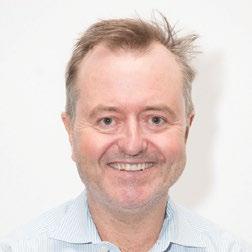

“ASHM is a large and complex organisation; our new subcommittee structure allows the organisation the time and space to properly address the evolving needs right across our sector. “
Nick notes that this will involve asking a lot of questions. He says: “When I compare HIV with viral hepatitis and sexual health, where ASHM was the main organisation right from the beginning, the major difference is the suite of existing organisations at all levels. The way that ASHM works with other organisations will have to be different — we’ll have conversations regarding who can do what, and as we start to answer, what do these things mean to us, we will also have to ask, how do we work with the organisations in this area?”
Nick explains the new sub-committee structure can facilitate more meaningful conversation between the board itself and with members: “We’re quite big in terms of scope, and it’s quite a challenge to provide technical input across all those areas. The sub-committee structure allows ASHM to really be hearing from the professions, in terms of what’s impacting them, and making sure that ASHM isn’t losing touch with the day to day work that needs to be doing.”
TIME WITH ASHM:
YEARS NICK 22
MONTHS ALEXIS 12
The Two of Us: Mark Bloch and Liz Crock on ASHM Membership.

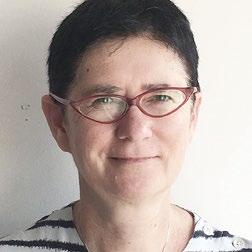
Our members drive the strategic direction of ASHM, give the organisation the voice and mandate it needs when advocating, and come together to create a community of professionals. Mark Bloch and Liz Crock, our Current President and past Vice President respectively, tell us that while ASHM is the mechanism to develop their respective workforces, our members are its voice. “We have needed to put in place structures to ensure we can hear all voices at the table,” says Mark.
Liz explains how membership has evolved: “When I first became an ASHM member in 1994 or so, ASHM was smaller. It was very much a medical organisation at that time, but always well respected, and at the forefront of HIV education in the country and the region. Nurses joined as members but were less involved in ASHM’s core work.”
We ask about how the pair met, and Liz says, “I first met Mark on the ASHM Board when I joined in late 2014. I was immediately drawn to his genuine good nature, loved his quirky sense of humour, and I appreciated his warm welcome to me as the only nurse on the board at that time.” Speaking of that time, we ask about the legacy of former ASHM CEO Levinia Crooks, and her impact on membership. “Levinia Crooks had a great impact on me as she did on many others,” says Liz. “She encouraged me to join the ASHM board, and she always supported nurses to have their voices heard and to develop their roles, including as Nurse Practitioners, but also in research, policy and education.”
Mark details some of the strategies in place to see meaningful engagement with these newer cohorts, including nurses. These strategies are member-driven and have the goal of ensuring that ASHM will continue to be a nimble and stable entity, regardless of sector-wide shifts or further organisational
expansion. For example, the new sub-committee structure drives the vision of “a board that is more managerial rather than hands on”. They were instigated in late 2018 as a response to rapid growth, and offer more opportunities for member’s voices to be heard.
When we ask what they personally get out of their role on the board, Liz says: “My work with ASHM incorporates it all — hands-on work with clients/patients, education and teaching, writing and advocacy for those most marginalised, and a sector that is forever pushing the boundaries within society. It’s a great feeling, that we are almost always ‘on the cutting edge’ or at the frontier, and our work influences the whole health sector and beyond.” Mark further notes: “This is one of the unique things about ASHM — along with our diversity and who we represent — it’s also who we serve through our work, and it creates strengths for the whole sector, because we can speak on behalf of those working in the field, but also on the needs of the communities we care for.”
NURSING MEMBERS 876
GENERAL PRACTITIONER MEMBERS 402
The Two of Us: Penny Kenchington and Melinda Hassel on Nurse Practitioners as Prescribers.
As Skype connects, we can hear the busy Townsville clinic in full swing. Penny Kenchington is giving advice to another nurse, and confirming she has time for a quick chat. Penny is a nurse practitioner (NP), the highest level of clinical nurse in Australia. NPs in sexual and reproductive health have been in Australia since the first NP project in the early 2000s. A nurse from Canberra Sexual Health, Elissa O’Keefe, was the first NP.
During our crash course on nursing and nurse practitioners, we learn that Melinda Hassall, our Clinical Nurse Lead, started at ASHM in 2016 but first met Penny in Canberra at an ASHM conference some years prior. As we talk about the conferences, Penny notes that she attended her very first ASHM conference in the mid ‘90s, when former ASHM CEO Levinia Crooks had just started at ASHM. She explains that Levinia championed the cause of NPs in the area of HIV, hepatitis and sexual health, drafting the first letter of support from ASHM. This was significant, as the organisation was amongst the first to endorse the policy.
“You could see how well respected and dynamic she was,” says Penny. “She was pushing into Asia, spreading ASHM around the globe, her vision for the development of ASHM was truly amazing.” Melinda reiterates this, bringing it back to nursing, of course: “I always found her supportive of people’s aspirations, I remember being very encouraged by her support for nurses.”
NURSE PRESCRIBERS IN AUSTRALIA 1800+

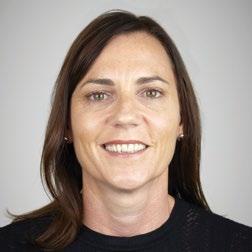
“Health systems often have restrictions on how NPs may prescribe, with extensive statebased regulation interacting with federal legislation. Most overly prohibitive protocols have been removed, but it has taken many years, and much advocacy. “
The resounding takeaway from the conversation is that the situation for NPs is complicated. The PBS has many restrictions on how NPs may prescribe, and extensive statebased regulation interacts with federal legislation. Most overly prohibitive state-based protocols have been removed, but it has taken many years, much advocacy, and the convoluted system still gives rise to issues that one wouldn’t expect in a health system like Australia’s.
Melinda argues that investing in nurses is necessary if we are to reach various national and international goals: “Nurse Practitioners increase access to treatment. Our sector already caters to marginalised communities, who bear the brunt of the burden of disease. Nurses cater to the people rendered invisible by society.” She explains that it is less costly on the health dollar, but equally if not more effective as other models, to have nurses going into homes or practicing outreach models: “We can take our service to isolated areas where marginalised and disenfranchised populations live. Nurses enable a high level of care in places where people otherwise couldn’t access care.”
Melinda sums up her approach to nursing at ASHM: “Everyone who comes to ASHM is passionate in a personal issue or professional field. It’s a dynamic workplace because people are taken seriously when they bring an issue to the table. We don’t just represent the workforce and their issues, we are a part of the workforce, each with our own passions.”
The Two of Us: Vanessa Towell and Laina Runk on ASHM NPED programs evolving in partnership.
Vanessa Towell has worked in almost every division of ASHM, and has played a key role in the expansion of viral hepatitis programs. “My role started in hepatitis B and I was fortunate to establish great working relationships with clinical advisors and external stakeholders who are incredibly passionate about their work. This support continued as my role broadened into hepatitis C. Now, with oversight of all NPED BBV and STI programs, I remain forever grateful that ASHM works with people who are incredibly generous with their time and expertise.”
“The ASHM programs in hepatitis B and C are an example of what collaboration and multidisciplinary champions in the space can achieve when we’re all working together,” continues Vanessa. “Not working in isolation and collaborating with community partners is key. Everyone has their own work to do, in research, clinical or with the community, but they make time for us because they want to change the status quo; and without their work we could not do our work.”
We ask Laina Runk, who works across ASHM’s hepatitis C in substance use settings education programs, what’s next for the hepatitis response, and where NPED is expanding. She tells us about developing front line workforces that can take education, testing, and even treatment to those who need it, such as working with needle and syringe programs (NSPs). “For example, I’ve heard of interesting ideas where a nurse in an NSP organisation can skype a doctor and get someone started on treatment straight away, which is a really exciting avenue to explore, especially with simplification of treatment and new testing technologies. We need to start thinking outside of the
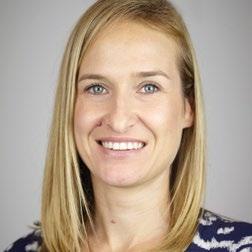
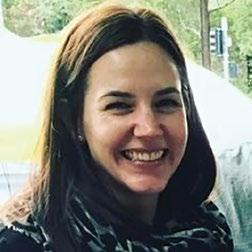
box in where and how we engage with people aside from the hospital/GP office setting.” Vanessa agrees: “There should be no wrong door for people to access treatment for hepatitis C.”
Laina talks about this approach expanding globally too. “Internationally speaking, there are still restrictions on who can prescribe hepatitis C treatment. Australia was unique in allowing primary care physicians to prescribe and only now are other countries beginning to introduce this. ASHM’s work with INHSU has seen our education implemented in seven countries so far, with three additional countries in development, in collaboration with relevant partners in those locations. The ideal end-point of these programs is that they will be handed over to organisations within the host country who work in the space, but unlike ASHM, may not yet have the educational and clinical experience.”
Asked what she gets out of working at an organisation like ASHM, Vanessa says: “Working with people who are passionate and have a wealth of knowledge which they are willing to share, and this includes the ASHM staff themselves, who have diverse and interesting professional backgrounds. It’s a community.”
HEPATITIS TRAINING DELIVERED NATIONALLY
HEPATITIS C 64
HEPATITIS B 36
The Two of Us: Marcel Kalau and Arun Menon on ASHM International Clinical Mentoring.
Marcel Kalau, a clinical mentor for ASHM working in Papua New Guinea, joined the organisation in 2017 because of his love of the sexual health community, the scope, and his interest in an international outlook. When asked about how the work has met his expectations he replies, “It has exceeded my expectations. I feel very privileged to be welcomed into PNG and to be part of a team that is so passionate and dedicated to improving the health and welfare of its people.”
Arun Menon is one of ASHM’s longest serving mentors. Much of his more recent work has been undertaken as part of the DFAT-funded Sexual and Reproductive Health Integration Program (SRHIP). Arun tells us about the situation on the ground in PNG: “ASHM has been providing clinical mentoring to health workers for a long time and really developed their healthcare system. More recently SRHIP has allowed us to develop more complex care programs.” Part of ASHM’s work is to establish a local pool of clinical mentors. In the last year alone, we have been able to reach 80 health care workers with structured clinical mentoring.
“The chief thing we’ve learnt delivering these programs is that not only are cultures diverse, but the physical environment and learning styles are very different,” Arun says. “We need to be very flexible — you simply cannot go in with a fixed agenda. The context of where we work is very important. We’ve learnt a lot from the people on the ground, and in this way our courses get better and better.”
He continues: “These concepts of sexual health, the issues of key populations and gender fluidity are very difficult. On the ground we are dealing with this every day. We say to workers, even if it clashes with your religion, you can’t deny people access to services.”
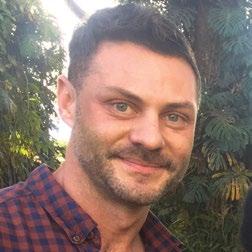

However, it’s not just the social issues in PNG that make it difficult, there are frustrations working in a country with far less infrastructure. “We frequently get stuck, travel is problematic, and funny as well,” says Arun. “Last time we were going Taree to Mentee our flight was cancelled, we took a jeep to go across hills and mountains. The people are hilarious with a subtle sense of humour.”
When we ask what’s in store for the future, Marcel says It will take years for the health system in PNG to improve. “But I feel the work we are doing there is really valuable in achieving this, and empowering and educating the local health workers to make a difference. On each trip I make to PNG I learn more about the health issues there, the limited resources, and the stigma that many people with HIV face. But I also see how dedicated and passionate the health workers are. Health workers are becoming more aware of and respecting the rights of key populations such as sex workers, MSM and transgender people.”
CLINICAL MENTORS
PNG 40+
FIJI 10
The Two of Us: Amy Sargent and Nadine Giatras on ASHM Conference and Events.
In 2003 ASHM hosted its first Australasian meeting, now the well-known Australasian HIV&AIDS Conference. That year the organisation brought on board a dedicated Conferences, Sponsorship and Events manager, Nadine Giatras, to oversee the event, and to build on sector knowledge and experience to run more events in the future.
The Conference and Events Division now comprises seven dedicated events staff and manages the sponsorship, marketing and promotion of international, national and in-house events, including 12 conferences this year. Originally, Nadine’s role was to manage these events, but also to build a team from the ground up, create processes, procedures, and resources. This required her to secure not only funding, but the trust of a sector comprised of expert researchers, busy clinicians, passionate community members and driven politicians.
Nadine notes: “A larger team meant consistency and working together, but also losing people and then training new people. Processes may seem procedural and straightforward once in place, but need constant revision as laws and organisations change. Conferencing itself has changed with regards to contractual obligations, risk management and rising costs. Yet at the same time sponsorship and funding seem to be drying up across the sector.”
How does one succeed in the face of so many challenges? Amy Sargent, ASHM conferences Senior Project Officer, says you must be able to see the funny side of things. Amy was intimidated by Nadine at first, but quickly saw her warmth, and her humour. “And we’re both from the UK,” she adds.
They laugh as Amy recounts an experience in Norway, 2016, after they fell asleep on an overnight train from Oslow to Burgen. “I’d been really sick and Nadine’s friend was with us, in the morning we arrived but we were still quite asleep and didn’t really know where we were. Nadine panicked and pushed us out onto the platform, which was pouring with torrential rain. We literally had to run to the nearest hotel and just pretend to have breakfast for 3 hours before we could venture back out safely. Sometimes you’ve just got to laugh. Wine also helps.”
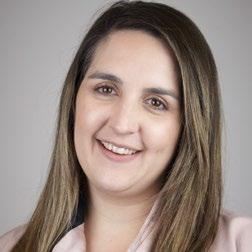

We ask what they see ahead for ASHM’s event services. Nadine notes that there are challenges ahead which will keep the division busy, with new ventures and organisations, and a push to highlight the services they provide for other organisations: “We hope they will see the value of a not-for-profit and health-minded and very experienced service provider.” Amy agrees: “Nadine is always keeping an ear out for business and new opportunities, which keeps the work challenging and interesting. I see more international recognition, we know we can do it, because we have all the skills, the experience and the feedback which seems to prove the value of our events.”
Nadine reflects, saying: “I still see people at conferences I saw 16 years ago, and it’s been a privilege to support, facilitate and be a part of their work.”
CONFERENCES MANAGED 8
2CONFERENCES PART MANAGED
NURSING MEMBERS
There are always challenges ahead for the ASHM Conferences and Events Team, which will keep us busy with new ventures and partnerships, highlighting the services we can provide for other organisations, there is real value in a not-forprofit, health-minded and very experienced service provider.

